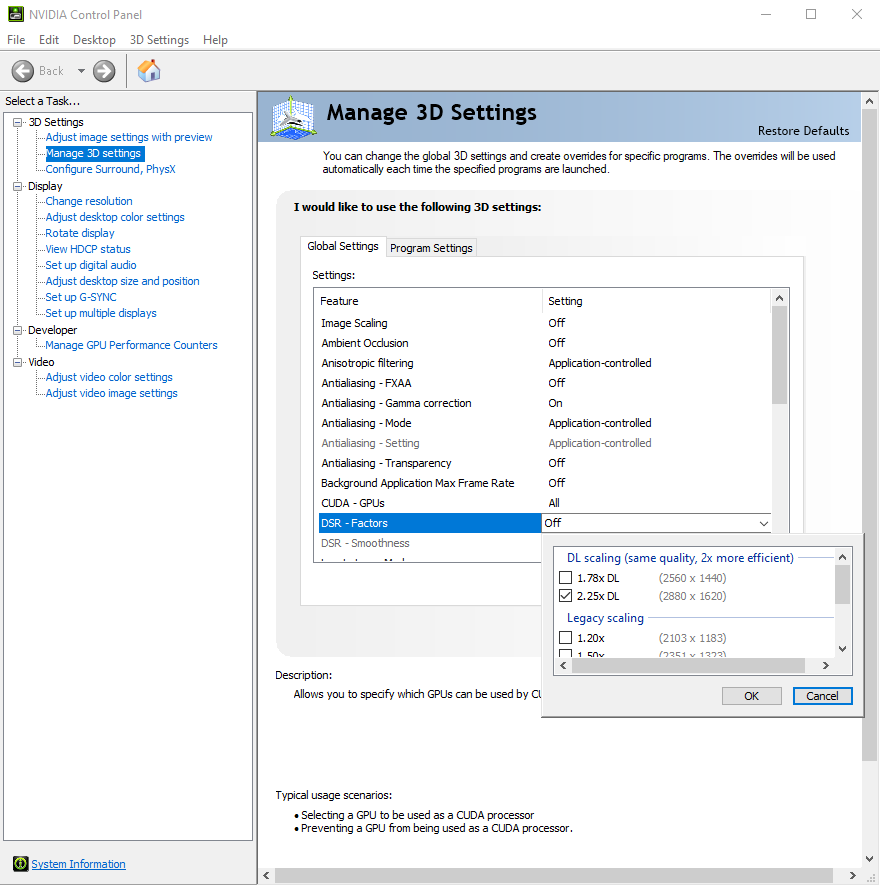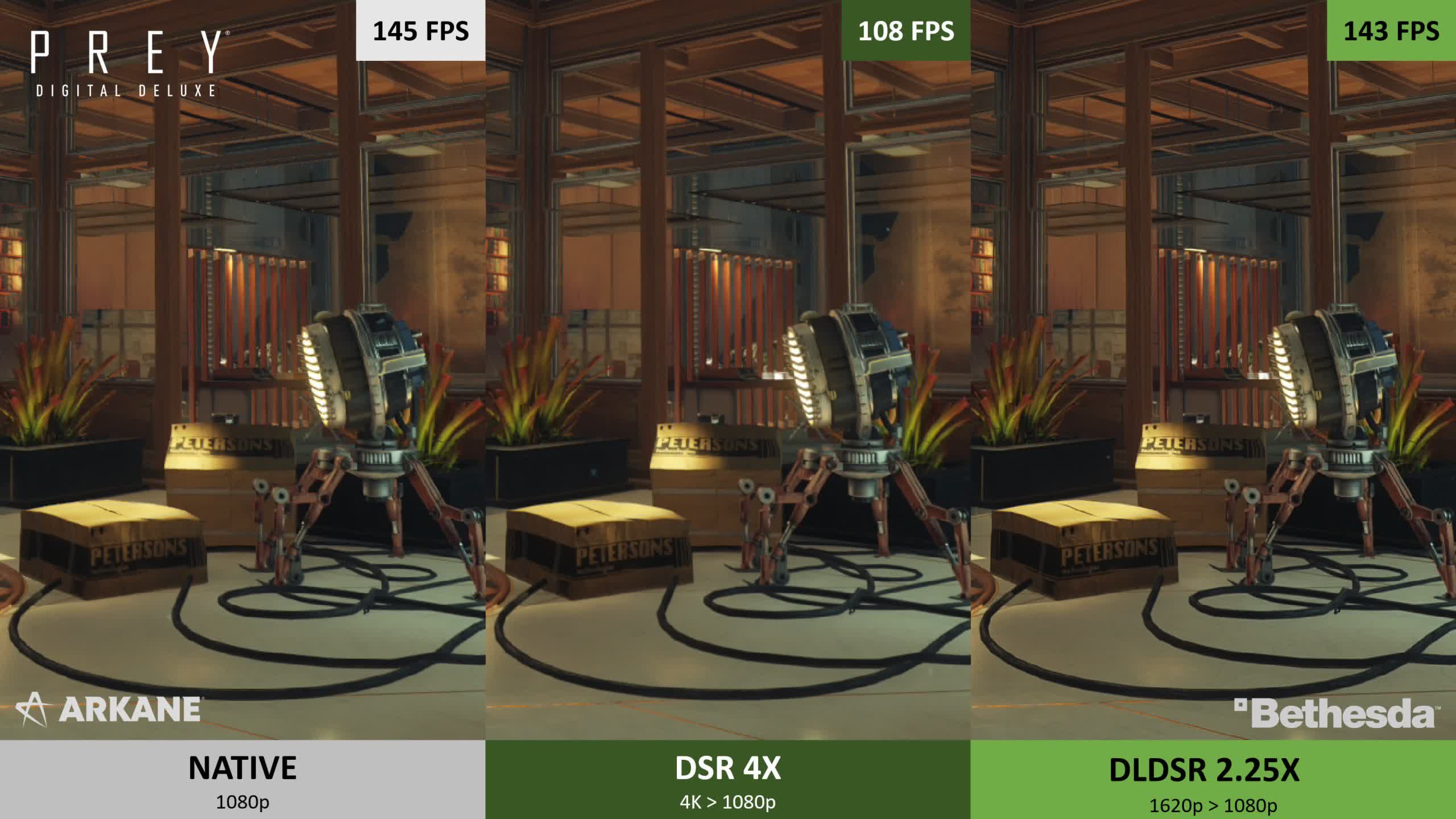Why it matters: Nvidia revealed this week that its January 14 Game Ready Driver will bring a new feature to RTX graphics cards that improves the company's Dynamic Super Resolution (DSR) function, improving image quality without the same performance hit.
Dynamic Super Resolution is Nvidia's method for letting users easily downsample games. It renders a game at a higher resolution, then shrinks it back down to the native resolution of your monitor. This results in extremely effective anti-aliasing but only performs well if a GPU has the extra horsepower to run at that higher resolution. It's a good way to make older games with outdated anti-aliasing technology look cleaner.
Deep Learning Dynamic Super Resolution (DLDSR) uses RTX graphics cards' Tensor cores to make this process more efficient. Nvidia's announcement claims using DLDSR to play a game at 2.25x the output resolution looks as good as using DSR at 4x the resolution, but achieves the same framerate as 1x resolution.

Nvidia demonstrates this with Bethesda and Arkane's 2017 Prey, first using DSR to downsample from 4K to 1080p, then using DLDSR to downsample from 1620p to 1080p. The 4K and 1620p screenshots look similar, but the 1620p one has a 40-frame-per-second advantage, almost hitting the same framerate as the original 1080p image.
Unlike DLSS which developers have to manually implement in each game, DLDSR will work in most games. The feature should appear in the Nvidia control panel as an option in Manage 3D Settings > DSR Factors.
Nvidia also announced it worked with popular ReShade author Pascal Gilcher to make some new filters for Freestyle, an Nvidia feature that can change a game's appearance in real time. One of them is a modified version of Gilcher's Ray Tracing Reshade Filter.
This driver update is the same one that will include the drivers for the PC version of God of War, which also comes out January 14.
